We’re always looking for reader feedback at my CEF Insider service, so we recently sent out a survey to our members (if you are one, you likely got it) asking for the topics they’d most like to see us cover.
One of the most common answers: how to know when it’s time to sell a closed-end fund (CEF).
So now I want to tackle that question (with more articles to come in the next few weeks answering other questions from our survey).
Sell Signs Not Always Easy to Spot
First off, it’s easier to know when to buy than when to sell. If the fund is well managed, has a strong track record, is deeply discounted and has a relatively safe dividend, it’s generally a screaming buy. Signs to sell aren’t always so obvious, but they are still there. You just need to know what to look for.
With that in mind, here are 3 key points to consider when deciding whether to sell a CEF.
No. 1: The Premium is Too High
The first clue that it’s time to sell a CEF is the most obvious: when the fund is overbought, it’s time to dump it.
For instance, take the BlackRock Enhanced International Dividend Trust (BGY), which I recommended to CEF Insider readers in March 2017. I chose BGY at that time because its discount had suddenly widened, despite the fact that changes in its portfolio indicated it was well positioned to surge.
The fund did this over the following 8 months:
A Fast 20% Return
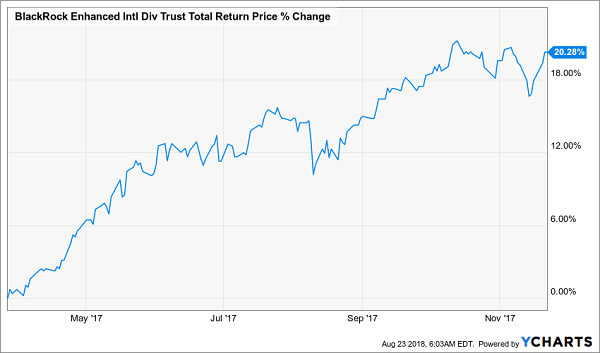
A big reason for this return: BGY’s unusually large discount of 12% in March steadily closed to a more normal 6.7% in November, when I urged subscribers to sell.
After my sell call, the fund did this:
A Steady Drop
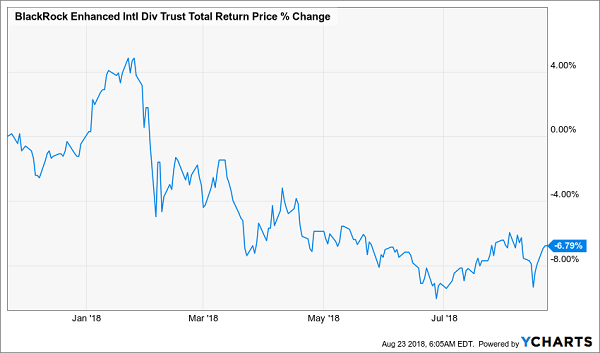
The lesson? Keep track of the discount, and when it gets too narrow (or becomes a premium) relative to its historic average, it’s time to get out of this crowded trade.
No. 2: Pressure on an Entire Sector
Sometimes some outside force will pressure the type of assets the fund invests in. When this happens, sell as fast as possible.
The great thing about CEFs is that, in large part because of their small size and retail-investor base, they react more slowly and over a longer period to bad news than more popular ETFs. This means anyone who keeps up with the news and uses CEFs has more leeway to respond to the market and sell.
A clear example of this happened with a municipal-bond fund in late 2017: the Invesco PA Value Municipal Income Trust (VPV).
I recommended this fund to CEF Insider members in March 2017 for familiar reasons: a great and reliable dividend yield, strong management and an unusually big discount. And the fund delivered over the next few months, even outperforming the municipal-bond index ETF that tracks VPV’s benchmark:
Cheap VPV Beats the “Dumb” Index Fund
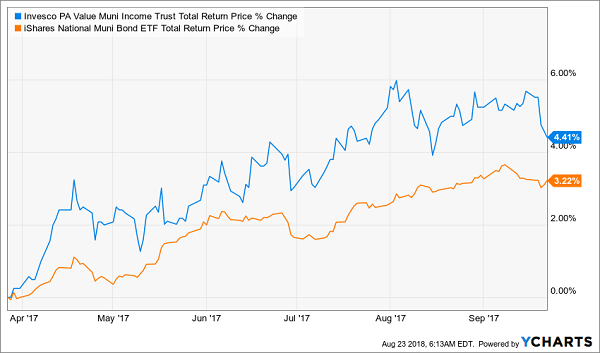
Then a major news event happened in September that prompted me to release a sell alert: S&P Global Ratings downgraded Pennsylvania’s bonds, and the state did not immediately respond to the market’s concerns.
The combination of a downgrade and lawmakers’ refusal to address it was a crystal-clear sell signal. VPV did this in the 5 months after we unloaded it:
VPV Takes a Fast Dive

For a municipal-bond fund, this is a big move in a short time. And all it took to avoid this short-term pain was to follow the news and react in a timely way.
No. 3: Get Defensive in a Bear Market
My third point is something that hasn’t yet happened since we launched CEF Insider, although I do believe it is a couple years away: a recession and bear market.
Every investor dreams of avoiding plunges like 2008/09. No one can steer clear of losses all the time, of course, but it is possible to defend your portfolio while continuing to collect the 7%+ dividend streams our CEF Insider picks hand us.
The key is to keep a watchful eye for 4 economic warning signs: rising unemployment, slower wage growth, consumer spending and, above all, the so-called “inverted yield curve.” That’s when the spread between 2-year and 10-year Treasury yields goes negative; in the past, it’s correctly indicated a recession within the following 12 months.
Below the Black Line Means Danger Ahead
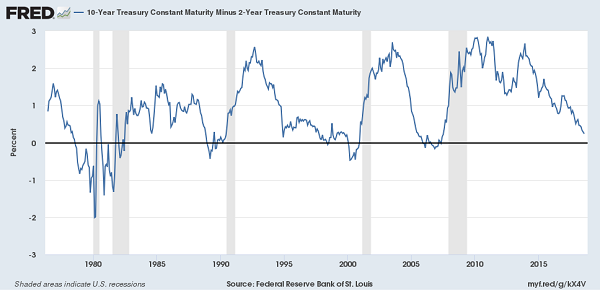
The financial press has spilled a lot of ink about the inverted yield curve recently, because in the last year it’s tanked to its lowest point since just before the 2008/09 meltdown.
But we haven’t seen an inverted yield curve yet. When we do, it’s time to emphasize defensive CEF sectors, especially if it’s accompanied by rising unemployment and falling wages. The appearance of an inverted yield curve is also a very good time to prune weaker CEFs from your holdings, such as those with flaws like the ones I showed you in points 1 and 2.
Fortunately, we’re not in this situation now: incomes are going up at an accelerating pace and unemployment remains below 4%. But I’ll keep a close eye on all the vital economic numbers and keep you updated (including giving you clear instructions on how to respond) in CEF Insider.
My No. 1 CEF Pick Now (8.1% Dividends and Quick 20%+ Gains Ahead)
One thing you may have noticed about CEFs is that you never hear about them from the financial media. That’s because the CEF market is a fraction of the size of the overhyped ETF space. And big fund companies like Vanguard pour all of their marketing cash into ETFs.
That’s a huge disservice to investors, because it draws their attention away from winners like my No. 1 CEF pick now, which is a terrific buy no matter what the market does.
How do I know?
Because it’s demolished the S&P 500 over the long haul:
A Proven Performer
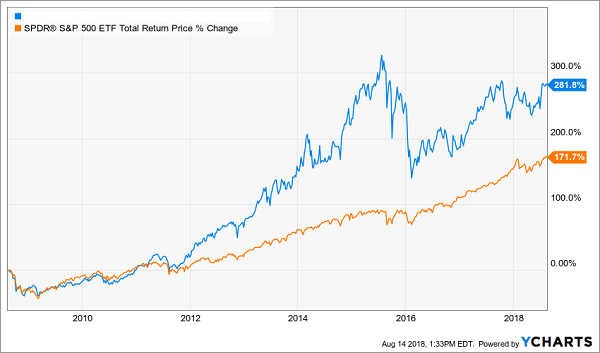
And even if a recession hits tomorrow, this fund’s 8.1% dividend is SAFE. You can simply keep collecting this rich payout and sit tight till the storm blows over.
So why isn’t this top-performing fund, which is run by some of the smartest minds in the pharmaceutical business, a household name?
For one, this low-key CEF is tiny, with just a $391-million market cap. For another, if you strip out the dividend and look at the fund on a price basis alone (the blue line below), my No. 1 pick looks like a terrible loser…
The Herd’s Looking at the Wrong Chart!
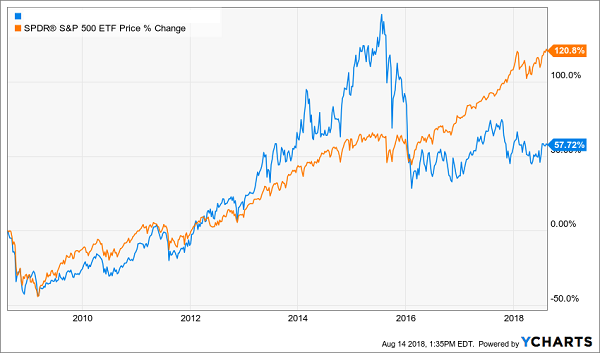
It’s only when you add this fund’s monstrous dividend back in that you get that huge 282% GAIN, which was almost entirely in CASH.
Yet as I write, this fund trades at a 4% discount to NAV! That may not sound like much, but it’s traded at fat premiums to NAV many times in the past 5 years.
When it does so again, we’ll be locked in for fast 20%+ upside from here, on top of that massive dividend!
My No. 1 pick is just one of 5 funds I’ve uncovered with SAFE dividends up to 10%, plus 20%+ price gains ahead in the next 12 months.
The best news? The details on all of them are just a click away. Just go right here and I’ll give you full details on these 5 income (and growth) plays: names, ticker symbols, buy-under prices and more.
